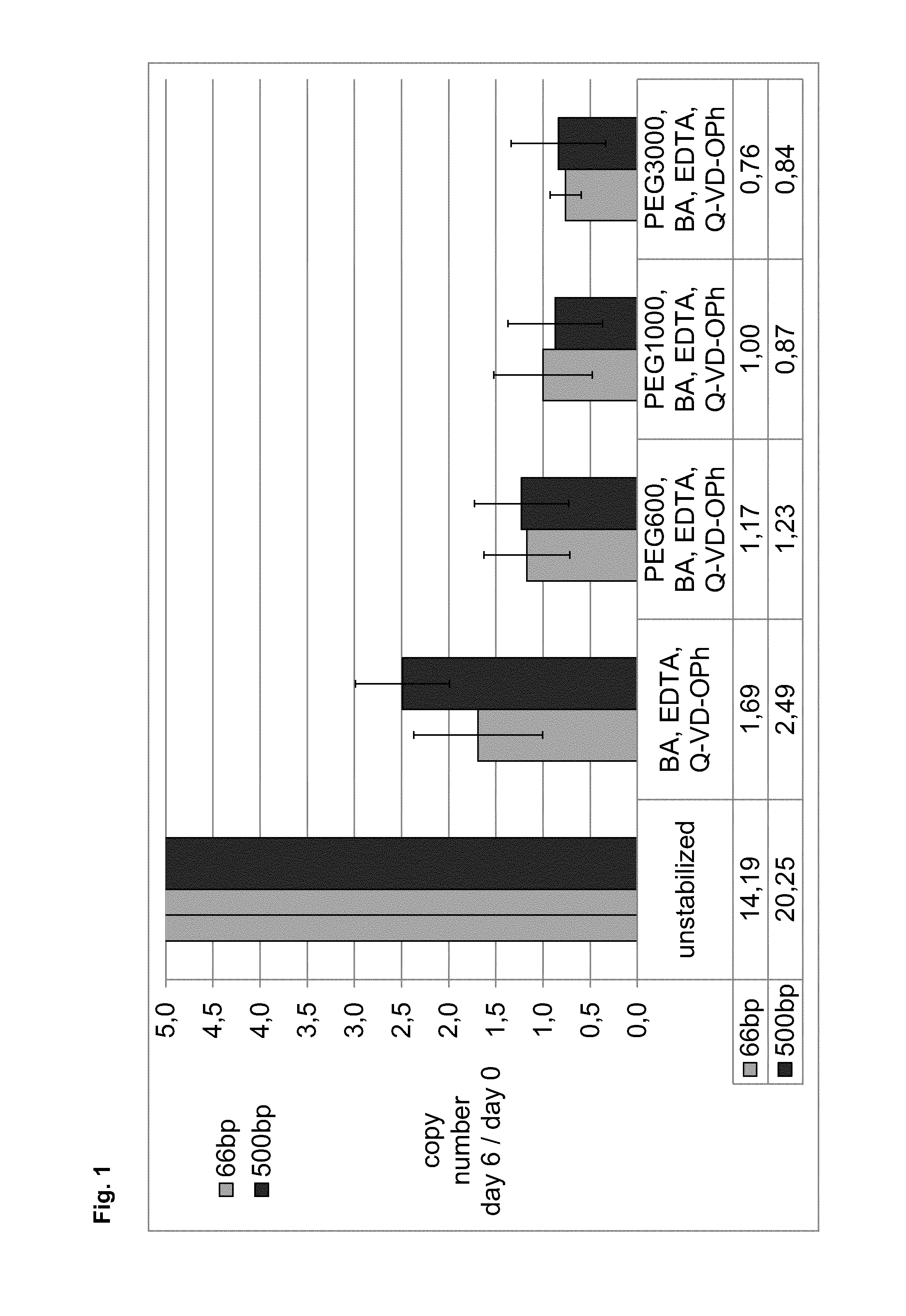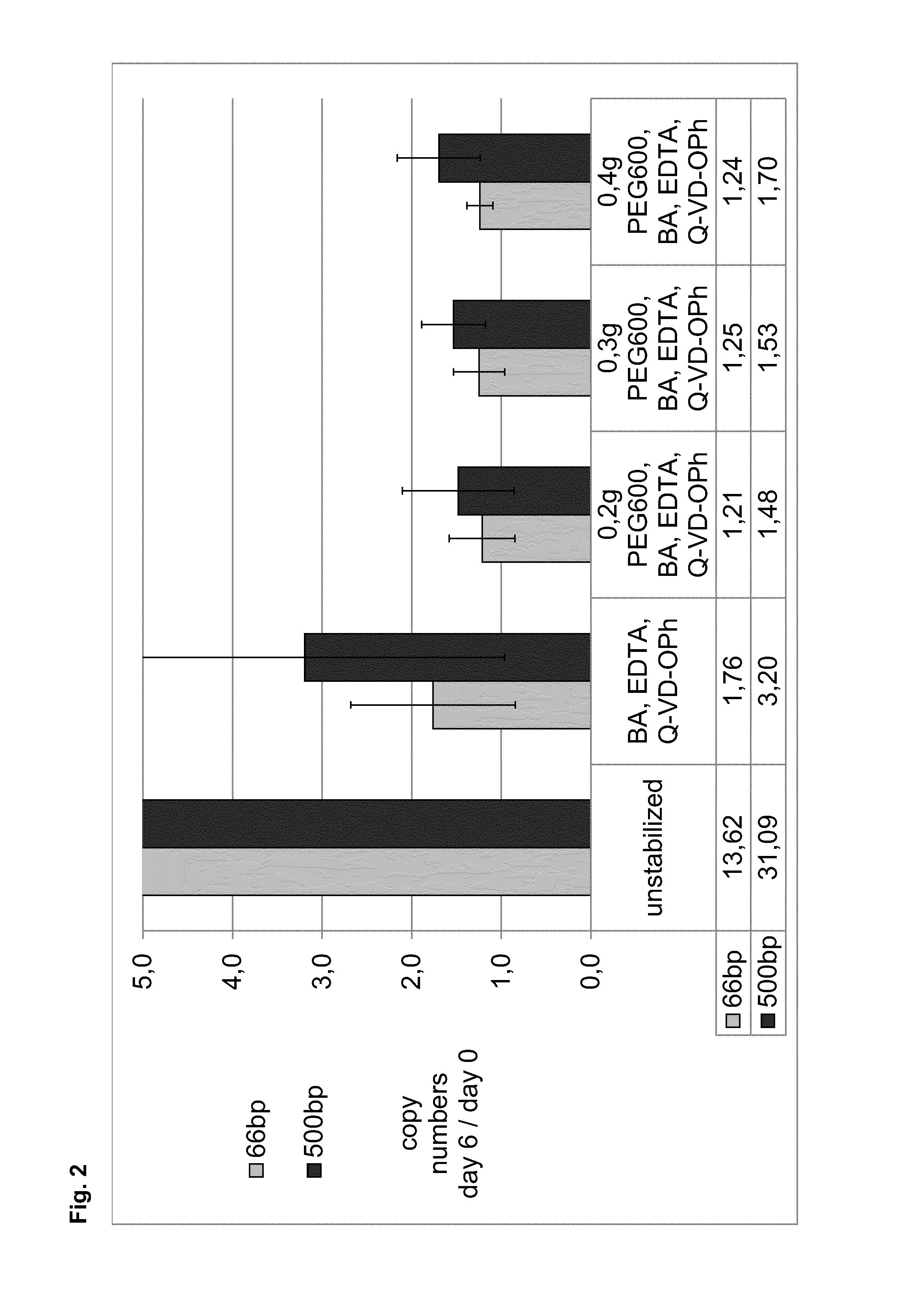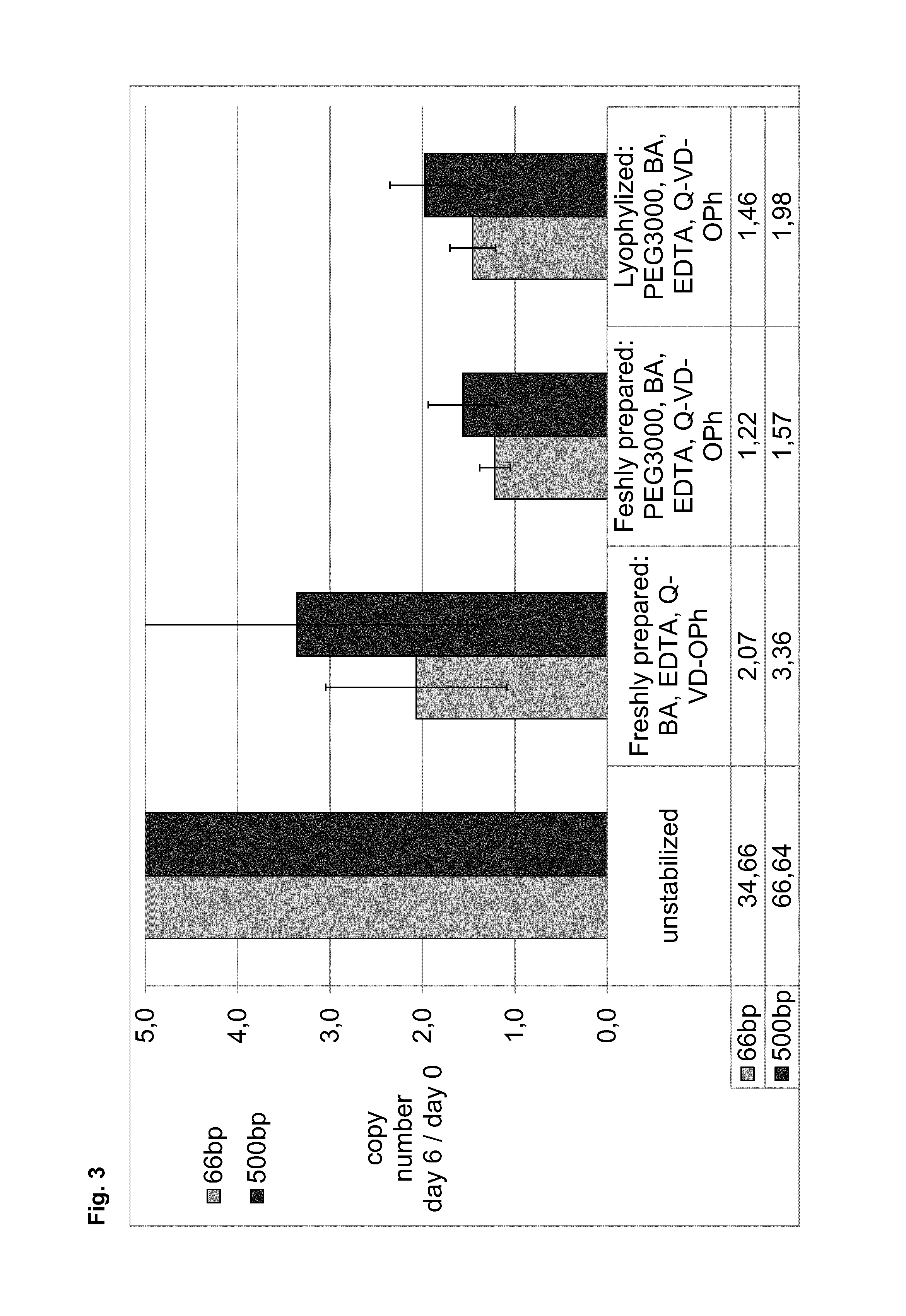Stabilization and isolation of extracellular nucleic acids
a technology stabilization, applied in the field of stabilization and isolation of extracellular nucleic acids, can solve the problems of increasing the difficulty of recovering extracellular nucleic acids for testing, lysis of white blood cells is a problem, and the concentration poses challenges, so as to improve the stabilization effect on the cell-containing sample, the effect of preserving the profil
- Summary
- Abstract
- Description
- Claims
- Application Information
AI Technical Summary
Benefits of technology
Problems solved by technology
Method used
Image
Examples
example 1
1. Example 1
[0281]In example 1, the stabilization effect of polyethylene glycol (PEG) with different molecular weights in combination with BA, EDTA and a caspase inhibitor (Q-VD-OPh) in the absence of water was tested and compared to a combined BA, EDTA and caspase inhibitor (Q-VD-OPh) approach. Moreover, the effect on hemolysis of such stabilization mixtures in plasma samples was measured in parallel. An EDTA blood sample served as unstabilized reference control.
Blood Collection and Stabilization
[0282]Samples of 10 ml whole blood from eight donors, collected in 10 ml spray dry K2EDTA tubes, were stabilized with mixtures of butanamide (BA) and EDTA with or without PEG from different molecular weights without addition of water. Caspase inhibitor (Q-VD-OPh) dissolved in DMSO was added by pipetting. Plasma was directly generated from 5 ml of stabilized or unstabilized blood samples. Residual blood was stored for additional 6 days at room temperature before plasma generation. ccfDNA was...
example 2
2. Example 2
[0294]In example 2, the stabilization effect of a combination of EDTA, BA and a caspase inhibitor (Q-VD-OPh) in the absence of water was tested and compared to corresponding compositions additionally including different amounts (0.2 g, 0.3 g or 0.4 g) of PEG with a molecular weight of 600 (PEG600). EDTA blood served as unstabilized reference.
Blood Collection and Stabilization
[0295]Samples of 10 ml whole blood from six donors, collected in 10 ml spray dry K2EDTA tubes, were stabilized with mixtures of butanamide (BA) and EDTA with or without different amounts of PEG with a molecular weight of 600 (PEG600) without addition of water. In addition, a caspase inhibitor (Q-VD-OPh) dissolved in DMSO was added by pipetting. Plasma was directly generated from 5 ml of stabilized or unstabilized blood samples. Residual blood was stored for additional 6 days at room temperature before plasma generation. ccfDNA was purified from 2 ml plasma, copy numbers of 18S rDNA gene were determin...
example 3
3. Example 3
[0304]In example 3, the stabilization effect of reagent mixtures, including a high molecular weight PEG (PEG3000), EDTA, BA and caspase inhibitor (Q-VD-OPh), directly lyophilized into blood collection tubes in the presence of water was tested and compared to a sample concomitantly treated with a solution comprising BA, EDTA and a caspase inhibitor (Q-VD-OPh).
Blood Collection and Stabilization
[0305]Samples of 10 ml whole blood from eight donors, collected in 10 ml spray dry K2EDTA tubes, were stabilized with mixtures of butanamide (BA), EDTA, and caspase inhibitor (Q-VD-OPh) with or without PEG3000. For lyophilisation all components including caspase inhibitor, EDTA, BA and PEG were dissolved in water. Volumes of 1 ml (final concentrations see below) were lyophilized on a dry freezer Epsilon 2-25D (Christ GmbH) in 5 ml tubes. Blood was transferred from K2EDTA tubes into the 5 ml tubes with the lyophilized stabilization reagent and stabilized by 10 times inverting the tube...
PUM
| Property | Measurement | Unit |
|---|---|---|
| concentration | aaaaa | aaaaa |
| time | aaaaa | aaaaa |
| temperatures | aaaaa | aaaaa |
Abstract
Description
Claims
Application Information
 Login to View More
Login to View More - R&D
- Intellectual Property
- Life Sciences
- Materials
- Tech Scout
- Unparalleled Data Quality
- Higher Quality Content
- 60% Fewer Hallucinations
Browse by: Latest US Patents, China's latest patents, Technical Efficacy Thesaurus, Application Domain, Technology Topic, Popular Technical Reports.
© 2025 PatSnap. All rights reserved.Legal|Privacy policy|Modern Slavery Act Transparency Statement|Sitemap|About US| Contact US: help@patsnap.com



